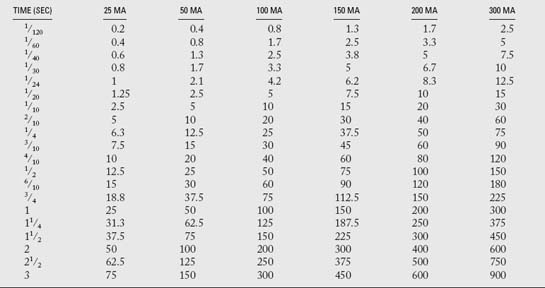chapter 9 Developing a Technique Chart
Upon completion of this chapter, the reader should be able to do the following:
• List the recommended screen variable kilovoltage peak (kVp) technique charts on the basis of anatomy for a small-animal practice
Santes’ rule: Calculation for determining an approximate amount of kilovoltage (kVp) necessary for a given anatomic area on the basis of measurement and the grid being used: (2 × tissue thickness in cm) + source-image distance + grid factor = kVp.
Technique chart: A chart based on tissue thickness and anatomic part that can be consulted for predetermined machine settings.
TECHNIQUE CHART FORMULATION
Base mAs Factors
An mAs chart is shown in Table 9-1. The following base mAs requirements for the intensifying screens are merely starting points for the radiographer. Each radiographic system may require slightly different exposures.
| Screen Type | mAs |
|---|---|
| Fast (high speed) | 2.5 to 10 |
| Medium (par speed) | 5 to 12.5 |
| Slow (ultradetail) | 30 to 40 |




